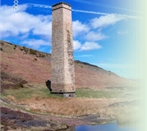The industrial history and archaeology of West Wales
Click on the button to go to :-
Click on the thumbnail to enlarge a photo or map and sometimes read more about it.
Then click 'Full Size' on the toolbar to see it in all its glory.
The Afan Valley
Port Talbot Steelworks
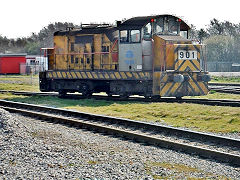
Port Talbot Steelworks '901'
|
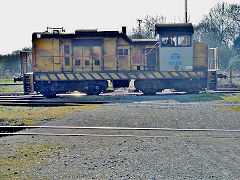
Port Talbot Steelworks '901'
|
|
Pont Rhydyfen - SS 796941
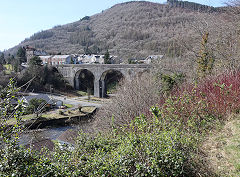
Aqueduct at Pont Rhydyfen
|
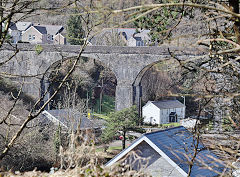
Aqueduct at Pont Rhydyfen
|

Aqueduct at Pont Rhydyfen
|
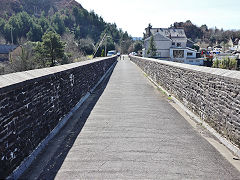
Aqueduct at Pont Rhydyfen
|
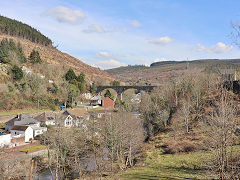
Aqueduct at Pont Rhydyfen
|
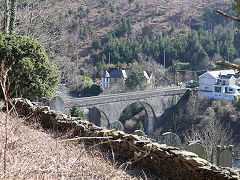
Aqueduct at Pont Rhydyfen
|
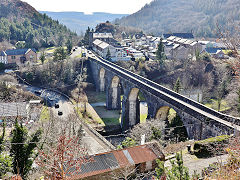
Aqueduct at Pont Rhydyfen
|
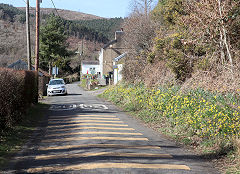
Leat to aqueduct
|
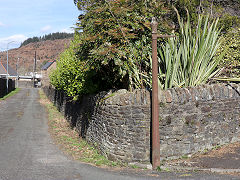
Cast-iron lampost
|
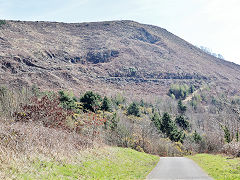
Incline to levels
|
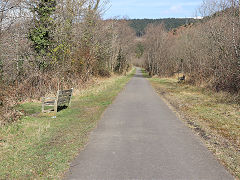
PTR trackbed
|
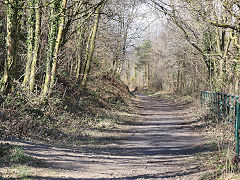
PTR trackbed
|

PTR trackbed
|
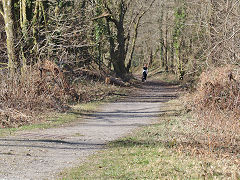
PTR trackbed
|
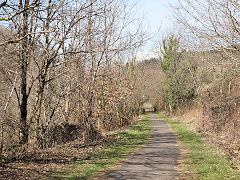
PTR viaduct approach
|
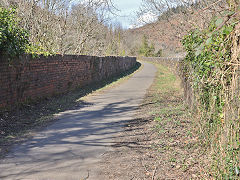
PTR viaduct
|
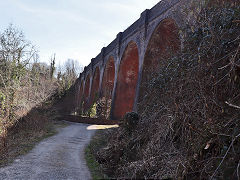
PTR viaduct
|
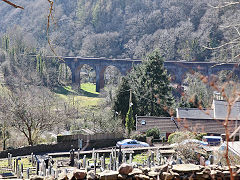
PTR viaduct
|
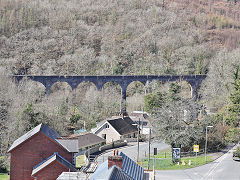
PTR viaduct
|
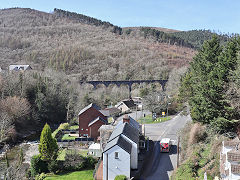
PTR viaduct
|
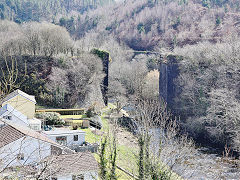
The RSBR bridge
|
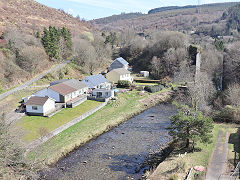
The RSBR bridge
|
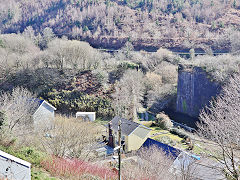
The RSBR bridge
|
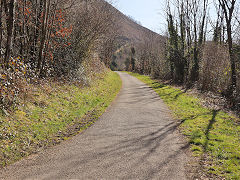
The RSBR trackbed
|
Cymmer - SS 862961
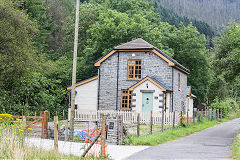
Gelli Crossing, GWR, Cymmer
|
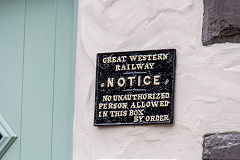
GWR notice, Gelli Crossing
|
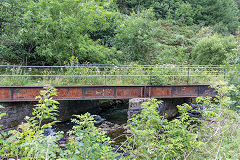
GWR iron bridge, Gelli
|
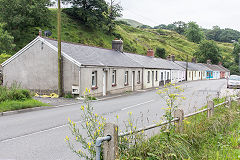
Gelli miners cottages, Cymmer
|
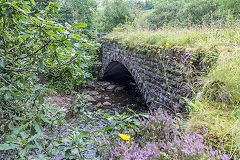
GWR stone bridge, Gelli
|
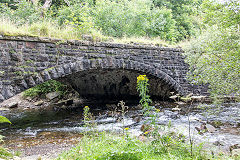
GWR stone bridge, Gelli
|
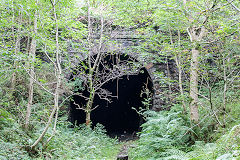
Gelli tunnel, RSBR, Cymmer
|
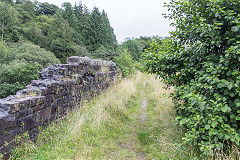
Gelli Viaduct, RSBR, Cymmer
|
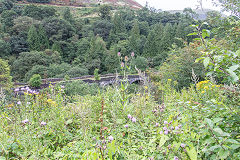
Gelli Viaduct, RSBR, Cymmer
|
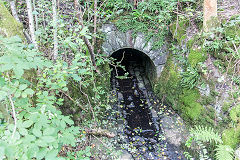
Culvert under GWR at Cymmer
|
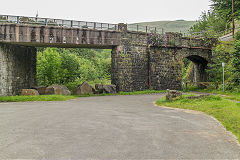
RSBR bridge, Cwmmer
|
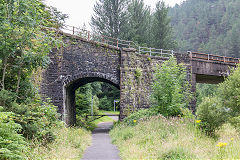
GWR bridge, Cymmer
|
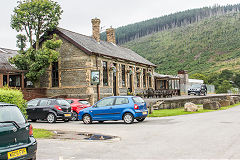
Cymmer Afan Station
|
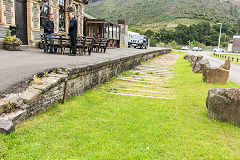
Cymmer Afan Station
|
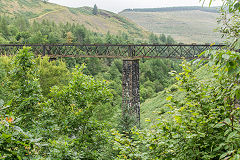
GWR Viaduct, Cymmer
|
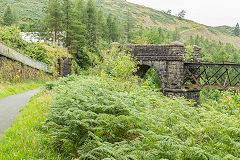
GWR Viaduct, Cymmer
|
Blaengwynfi - SS 889967

Trackbed towards Blaengwynfi
|
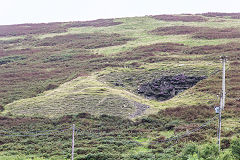
Blaengwynfi quarry
|
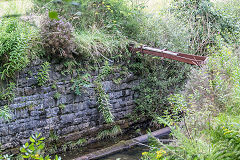
Glyncorrwg Pits bridge
|
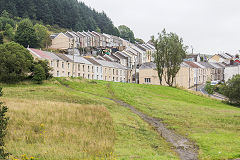
Blaengwynfi station site
|
Abergwynfi - SS 9006 9611
Avon Colliery had a long tramway running up the hillside to Avon Level Collieries. At one point it crossed the River Afan on a rather flimsy viaduct. Ceri Jones took these photos of the remains c2019.
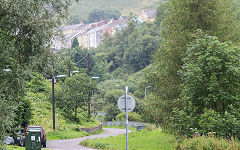
Abergwynfi Colliery branch
|

Avon Colliery tramway, Abergwynfi
|
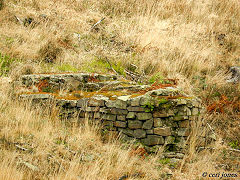
Avon Colliery tramway, Abergwynfi
|
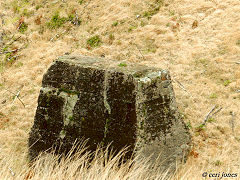
Avon Colliery tramway, Abergwynfi
|
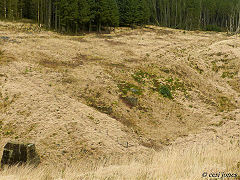
Avon Colliery tramway, Abergwynfi
|

Avon Colliery tramway, Abergwynfi
|

Avon Colliery tramway, Abergwynfi
|

Avon Colliery tramway, Abergwynfi
|
Cwm Pelenna Colliery - SS 8169 9720
The ventilation furnace, flue and chimney at Cwm Pelenna were connected with the Fforch-dwm level, driven by Robert Parsons and Charles Strange in the late 1830s. The colliery was re-worked from the 1890s as the Mercantile Colliery, then the Blaenmawr Navigation Colliery, the Garth Level, and finally by the National Coal Board as Garth Tonmawr Colliery until closure in 1964.
Thanks to Gwyn Jenkins for the photos and info.
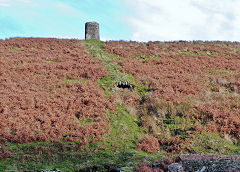
Cwm Pelenna Colliery ventilation flue
|
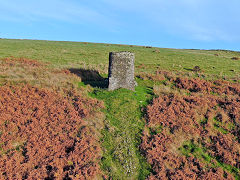
Cwm Pelenna Colliery ventilation flue
|
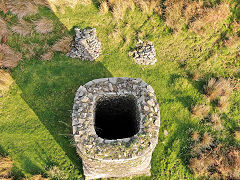
Cwm Pelenna Colliery ventilation flue
|
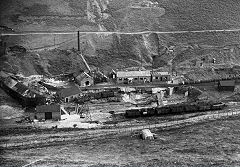
Garth Colliery ventilation flue
|

Mercantile Colliery, 1914
|
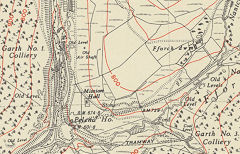
Garth No 1 Colliery, 1948
|
Swansea
Morfa Copperworks - SS 6610 9520
Morfa Copperworks was opened in 1835 by 'Williams Foster & Co' and combined with the Hafod Copperworks in 1924 to form 'British Copper Manufacturers' and copper smelting stopped. The combined works became the 'Yorkshire Imperial Metals Ltd' in 1957 and the rolling Mills finally closed in 1980. The site is now a 'park-and-ride' and the buildings are being re-developed.
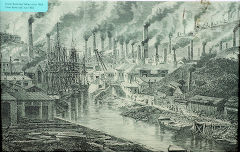
Morfa Copperworks looking up river in 1865
|

Morfa Copperworks powerhouse
|
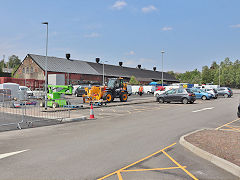
Morfa Copperworks rolling mill
|
Hafod Copperworks - SS 6615 9497
Hafod Copperworks was started by 'Vivian & Sons' in 1810, combining with the adjacent Morfa Copperworks in 1924. Two engine houses and their chimneys survive, one containing its'Musgrave' engine. this engine drove the rope race outside which powered the rolling mills. Further down the riverbank is the 'V & S Ltd No 1 shed', the main locomotive shed for the complex but the structure is cuerrectly surrounded by scaffolding.
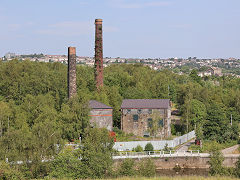
Hafod Copperworks
|
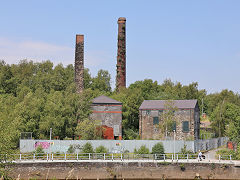
Hafod Copperworks
|
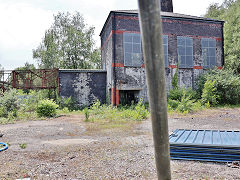
Hafod Copperworks engine houses
|
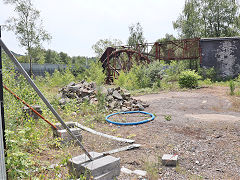
Hafod Copperworks rope race
|
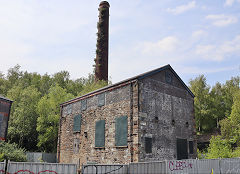
Hafod Copperworks engine houses
|
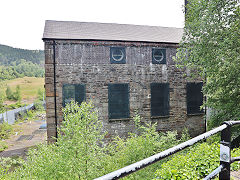
Hafod Copperworks engine houses
|
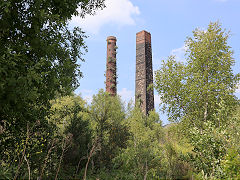
Hafod Copperworks chimneys
|

Hafod Copperworks ferry steps
|
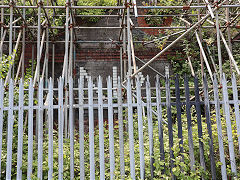
Hafod Copperworks engine shed
|
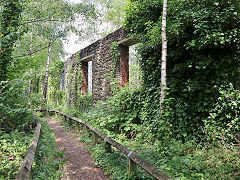
Hafod Copperworks canal bank
|
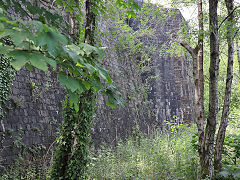
Hafod Copperworks tip tramway
|
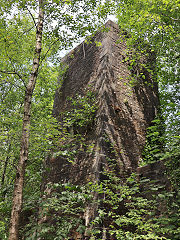
Hafod Copperworks tip tramway
|
Swansea Canal - SS 6610 9507
The Swansea Canal opened in 1796, traffic not finally ceasing until 1931. The bridge over the canal led from the Hafod Copperworks to the office block. The limekiln is shown on the 1875 OS map.
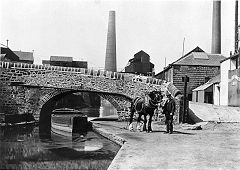
Swansea Canal bridge
|
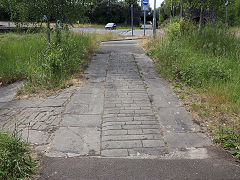
Swansea Canal bridge approach
|
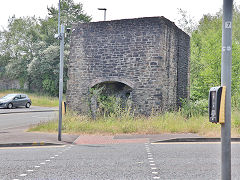
Limekiln beside the Swansea Canal
|
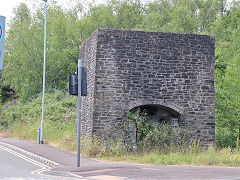
Limekiln beside the Swansea Canal
|
White Rock Copperworks - SS 6625 9480
White Rock Copperworks, the third oldest of the Swansea copperworks, was established in 1737, closing in 1924, Even though much of the site was cleared and covered over in the 1960s, there are still remains worth seeing. These include the river dock, the canal dock, the incline to the tip and some of the 'Great Workhouse'.
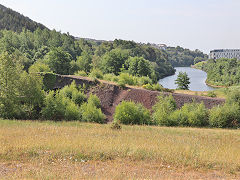
White Rock tip tramway
|
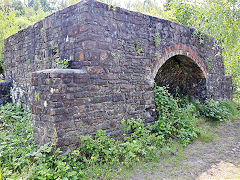
White Rock tip tramway
|
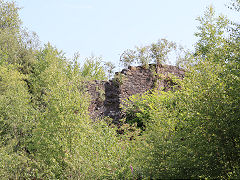
White Rock tip tramway
|
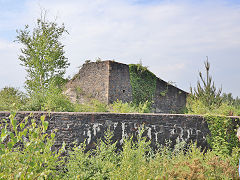
White Rock tip tramway
|
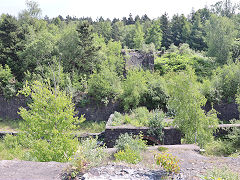
White Rock tip tramway
|

White Rock lead smelter
|
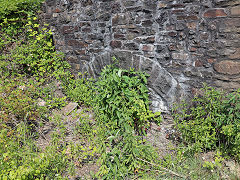
White Rock arsenic flue
|
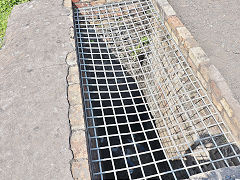
White Rock arsenic flue
|
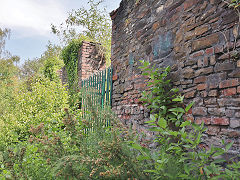
White Rock Great Workhouse
|

White Rock Great Workhouse
|
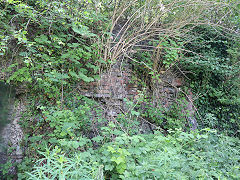
White Rock Great Workhouse
|

White Rock Copperworks dock
|
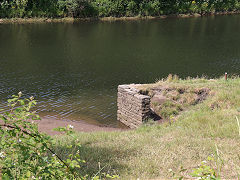
White Rock Copperworks dock
|

White Rock Copperworks dock
|
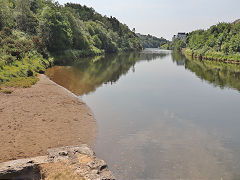
White Rock lower quay
|
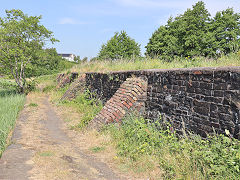
White Rock upper quay
|
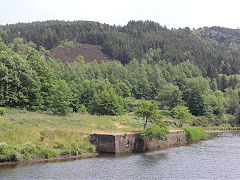
White Rock upper quay
|
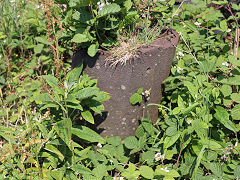
White Rock upper quay crane
|
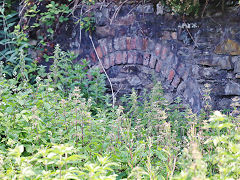
White Rock upper quay tunnels
|
|
Llansamlet Canal (Smiths Canal), White Rock - SS 6636 9475
The Llansamlet Canal, or Smiths Canal, was opened in c1784 from Llansamlet to Foxhole. It was the main supplier of coal to the White Rock Copperworks where there was a basin and a covered way or tunnel under the Great Workhouse with access points into the work area. The main line of the canal probably closed c1850.
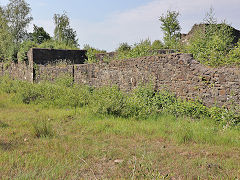
Smiths Canal at the Copperworks
|
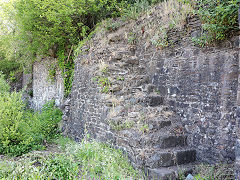
Smiths Canal at the Copperworks
|
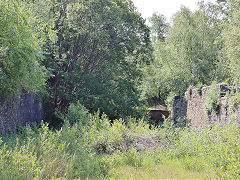
Smiths Canal at the Copperworks
|

Smiths Canal at the Copperworks
|
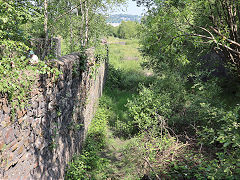
Smiths Canal at the Copperworks
|
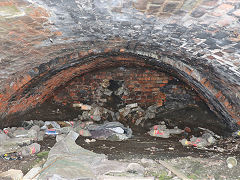
Smiths Canal tunnel
|
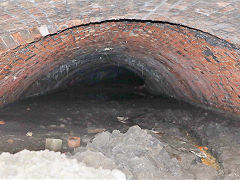
Smiths Canal tunnel
|
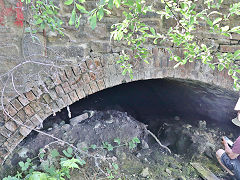
Smiths Canal tunnel
|
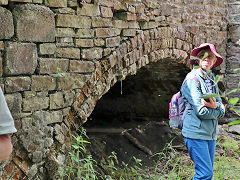
Smiths Canal tunnel
|
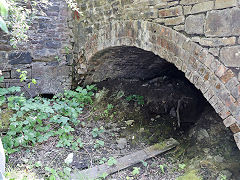
Smiths Canal tunnel
|
|

East Dock, Swansea, 1964
|
The Swansea and Mumbles Railway
The Swansea and Mumbles Railway (earlier 'The Oystermouth Railway') opened in 1806 to transport limestone for building Swansea. Passenger traffic began in 1807, worked by horses until 1877 when steam locos took over. The line was electrified in 1929 and closed in 1960.
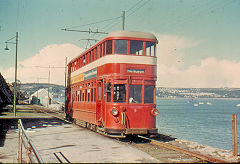
Swansea and Mumbles Railway
|
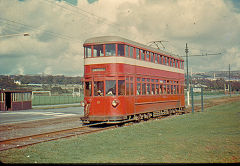
Swansea and Mumbles Railway
|
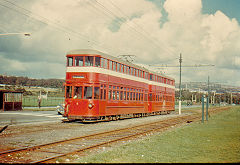
Swansea and Mumbles Railway
|
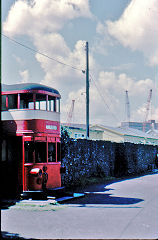
Swansea and Mumbles Railway
|
The Gower Peninsular
Bishopston Lead Mines
All-Slade Mine - SS 5851 8748
All-Slade Mine was first recorded working in the late 1700s when twas said to have made a profit of £12,000 but it's probably older than that.
Active again for three years from about 1810, the mine is mentioned in "A Topographical Dictionary of The Dominion of Wales by Nicholas Carlisle, London, 1811", which says :- "There is a Lead mine in a Valley in this Parish, called All Slade, about a quarter of a mile from the Sea-shore. This Mine was re-opened about two years ago, and some Tons of Ore of a good quality were raised from it, but it was again dropped, either for want of Capital or Spirit in the Adventurers. Several Implements of the ancient Miners were discovered upon reopening it, which occasioned an idea that they perished in the Mine, but no remains of them were found."
The mine was finally reopened as the Bishopston Silver-Lead Mine from 1850-53 with workings only reaching 14 fathoms below the deep level; reports in the Mining Journal state that the pump was never able to adequately cope with the influx of water. The only recorded output was 10 tons of lead ore in 1853.
Long Ash Mine - SS 5742 8862
Long Ash lead Mine was opened in 1852 but there was very little ore and it soon ceased work.
Pwll Du Quarry - SS 5851 8748
Pwll Ddu Quarry dates back to the 1600s and closed c1900. The quarry was let to individuals who managed their own section. The stone was piled on the beach to await shipping only in the Summer months.
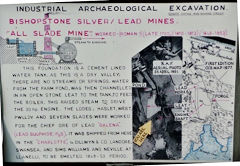
All Slade mine information
|

All Slade mine, Brandy Cove
|
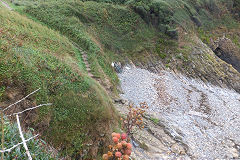
All Slade mine, Brandy Cove
|
|
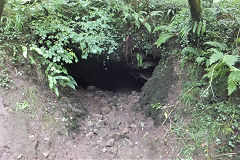
Guzzle Hole, Bishopston
|
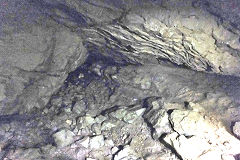
Guzzle Hole, Bishopston
|
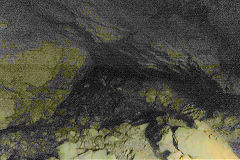
Guzzle Hole, Bishopston
|
|
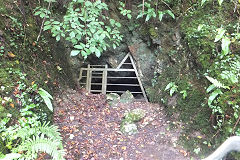
Long Ash mine, Bishopston
|
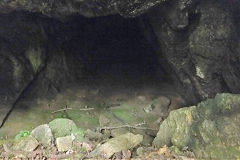
Long Ash mine, Bishopston
|
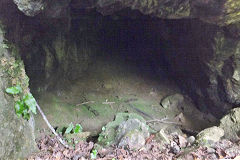
Long Ash mine, Bishopston
|
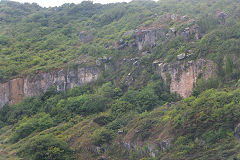
Pwll Du Quarry, Bishopston
|
Port Eynon
Saltworks and quarries
I wasn't expecting to find much old industry along the Gower coast but there turned out to be quite a few quarries, limekilns and this saltworks dotted about the coastal path.
The buildings date from the early 1600s and were soon extended to become a saltworks. This didn't last much after 1700, the saltpans being demolished and the building became home to the quarrymen and fishermen until the early 1900s
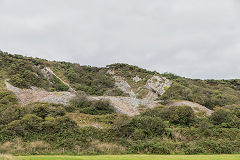
Saltworks quarries
|
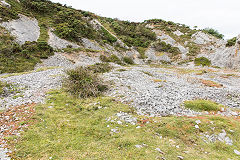
Saltworks quarries
|
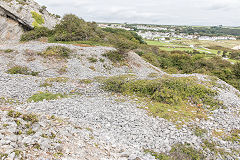
Saltworks quarries
|

Saltworks quarries
|
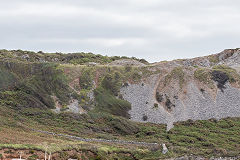
Saltworks quarries
|
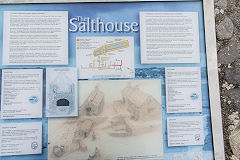
Saltworks information board
|
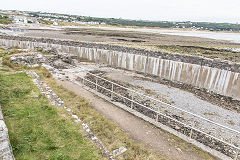
Port Eynon saltpans
|
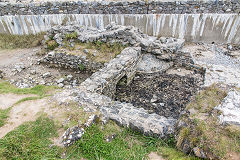
Port Eynon saltpans
|
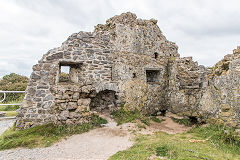
Port Eynon salthouse
|
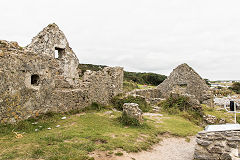
Port Eynon salthouse
|
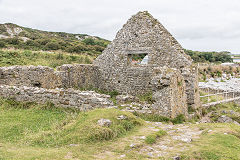
Port Eynon salthouse
|
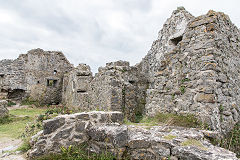
Port Eynon salthouse
|

Port Eynon salthouse
|
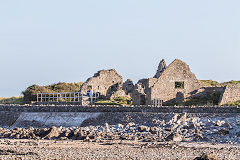
Port Eynon salthouse
|
|
|
Coastal Limekilns
Little Tor, Three Cliffs - SS 5289 8797
Overton Mere, Port Eynon - SS 4540 8490
Ram Grove, Pitton - SS 4303 8685
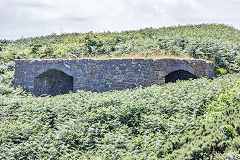
Little Tor limekiln, Three Cliffs
|
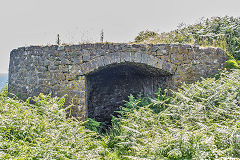
Little Tor limekiln, Three Cliffs
|
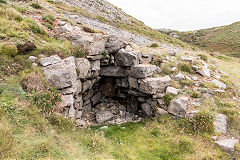
Overton Cliff limekiln
|
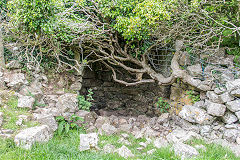
Ram Grove limekiln, Pitton
|
Mewslade Bay kiln 1 - SS 4191 8726
Above the Eastern end of Mewslade Bay, shown as 'old limekiln' in 1879 with an adjacent quarry
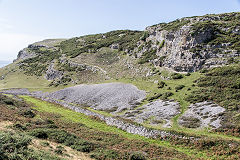
Mewslade Bay quarry, Rhossili
|

Mewslade Bay limekiln 1, Rhossili
|
|
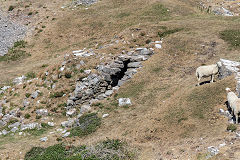
Mewslade Bay limekiln 1, Rhossili
|
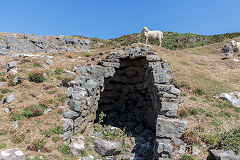
Mewslade Bay limekiln 1, Rhossili
|
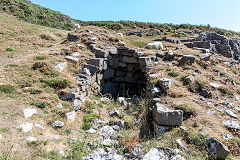
Mewslade Bay limekiln 1, Rhossili
|
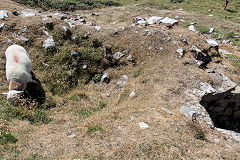
Mewslade Bay limekiln 1, Rhossili
|
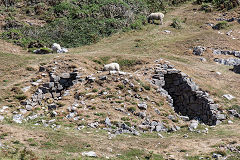
Mewslade Bay limekiln 1, Rhossili
|
Mewslade Bay kiln 2 - SS 4142 8744
At the Western end of Mewslade Bay where Fall Bay begins, shown as 'old limekiln' in 1879
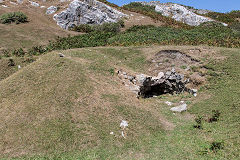
Mewslade Bay limekiln 2, Rhossili
|
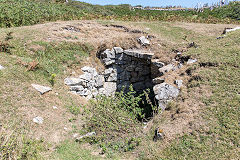
Mewslade Bay limekiln 2, Rhossili
|
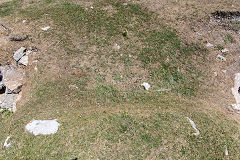
Mewslade Bay limekiln 2, Rhossili
|
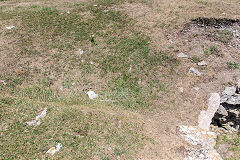
Mewslade Bay limekiln 2, Rhossili
|
Landimore - SS 4653 9339
Cwm Ivy, Llanmadoc - SS 4401 9374
One of 4 limekilns that existed in Landimore, Gower in 1878. I must have walked past the site of the most northerly which must be gone, the other two may still exist, another look another time ! And one next door at Llanmadoc.
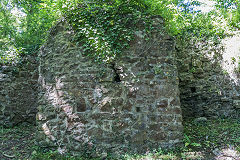
Landimore limekiln
|
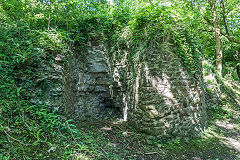
Landimore limekiln
|
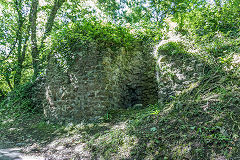
Landimore limekiln
|

Landimore limekiln
|
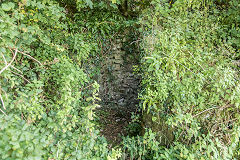
Cwm Ivy limekiln, Llanmadoc
|
|
|
|
Whiteford Sands
Whiteford Lighthouse - SS 4437 9726
This is the only cast-iron wave-swept lighthouse left in Europe. It was built in 1865 and designed by John Bowen of Llanelli and is 44ft high. The lighthouse was disused from 1920 to the 1980s when it was re-lit using solar power. Sadly this failed and the lighthouse is now just a physical beacon.
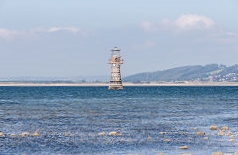
Whiteford Lighthouse
|
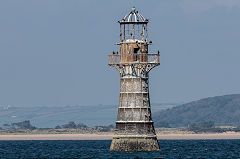
Whiteford Lighthouse
|
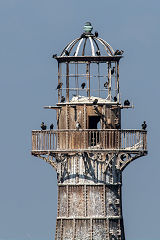
Whiteford Lighthouse
|
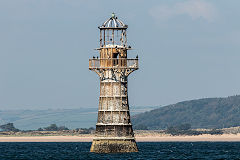
Whiteford Lighthouse
|
Unknown wreck - SS 445966
The wreck of an unknown steel ship lies just South of the lighthouse, complete with boiler and other pieces of ironmongery. At SS 449966 part of an upturned wooden boat appears and disappears with the sands.
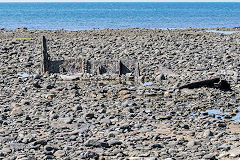
Whiteford Sands wreck
|
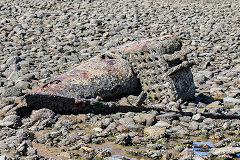
Whiteford Sands wreck
|
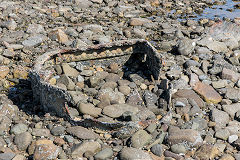
Whiteford Sands wreck
|
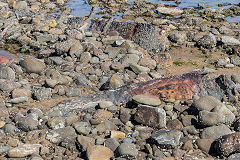
Whiteford Sands wreck
|
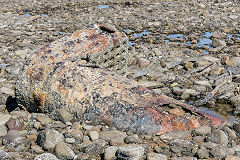
Whiteford Sands wreck
|

Whiteford Sands wreck
|
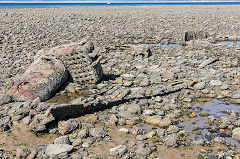
Whiteford Sands wreck
|
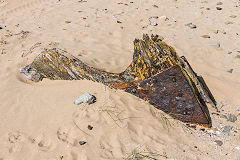
Upturned wooden boat wreckage
|
Clyne Valley Colliery
Bob Ashton from Northants sent this photo of colliers at the short-lived Clyne Valley Colliery, Dunvant, only open from 1903 to 1915.
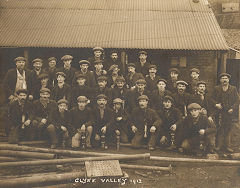
Clyne Valley Colliers, 1913
|

Clyne Valley Colliery, 1913
|
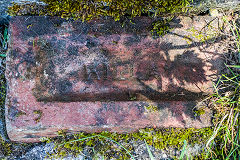
'Killay'
|
Neath Abbey Ironworks
Neath Abbey Ironworks
The blast furnaces

Neath Abbey Ironworks furnaces
|
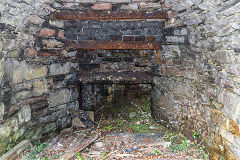
Neath Abbey Ironworks furnaces
|
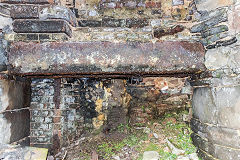
Neath Abbey Ironworks furnaces
|
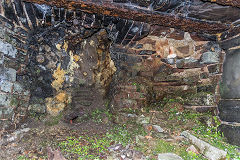
Neath Abbey Ironworks furnaces
|
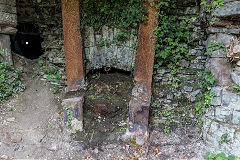
Neath Abbey Ironworks furnaces
|
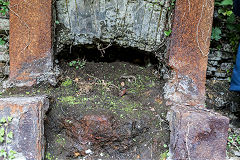
Neath Abbey Ironworks furnaces
|

Neath Abbey Ironworks furnaces
|
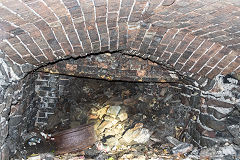
Neath Abbey Ironworks furnaces
|
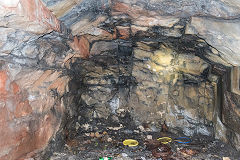
Neath Abbey Ironworks furnaces
|
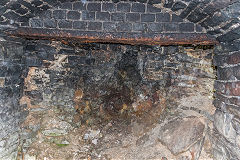
Neath Abbey Ironworks furnaces
|
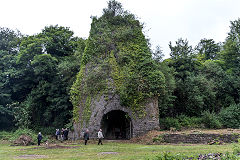
Neath Abbey Ironworks furnaces
|
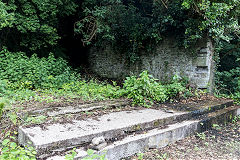
Neath Abbey Ironworks furnaces
|
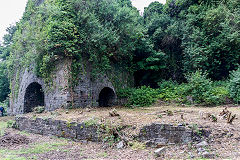
Neath Abbey Ironworks furnaces
|
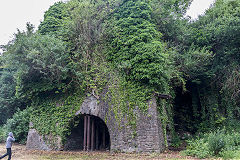
Neath Abbey Ironworks furnaces
|
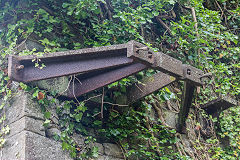
Neath Abbey Ironworks furnaces
|
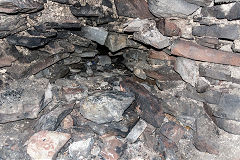
Neath Abbey Ironworks furnaces
|
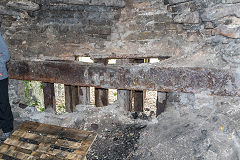
Neath Abbey Ironworks furnaces
|
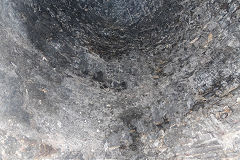
Neath Abbey Ironworks furnaces
|
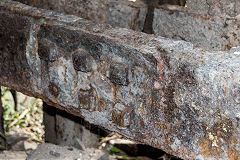
Neath Abbey Ironworks furnaces
|
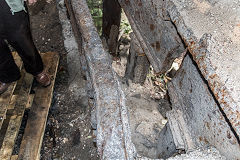
Neath Abbey Ironworks furnaces
|
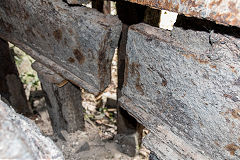
Neath Abbey Ironworks furnaces
|

Neath Abbey Ironworks furnaces
|
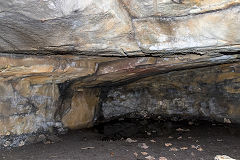
Neath Abbey Ironworks furnaces
|
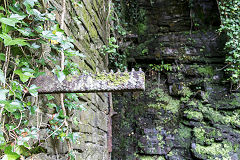
Neath Abbey Ironworks furnaces
|
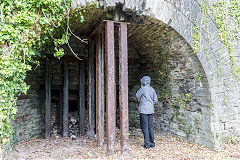
Neath Abbey Ironworks furnaces
|
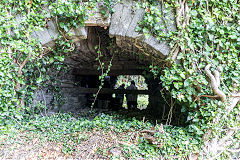
Neath Abbey Ironworks furnaces
|

Neath Abbey Ironworks furnaces
|
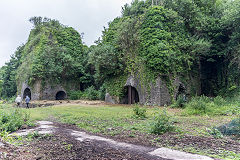
Neath Abbey Ironworks furnaces
|
Offices, warehouse and workshops
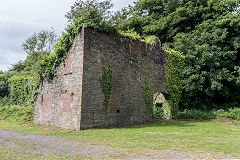
Neath Abbey Ironwork offices
|
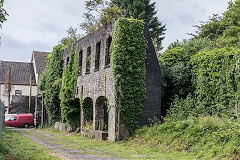
Neath Abbey Ironwork offices
|
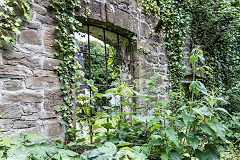
Neath Abbey Ironwork offices
|
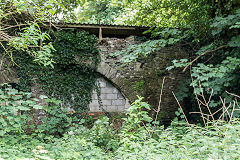
Neath Abbey Ironwork offices
|
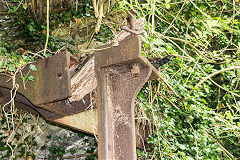
Neath Abbey Ironwork offices
|
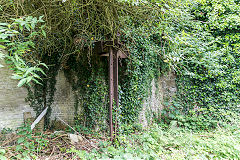
Neath Abbey Ironwork offices
|
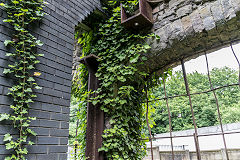
Neath Abbey Ironwork offices
|
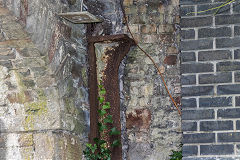
Neath Abbey Ironwork offices
|

Neath Abbey Ironwork offices
|
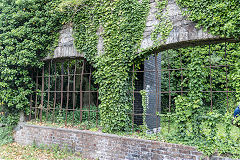
Neath Abbey Ironwork offices
|
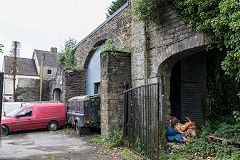
Neath Abbey Ironwork offices
|
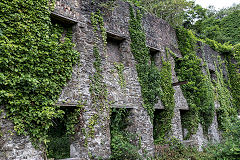
Neath Abbey Ironwork offices
|
Coke ovens and charging area
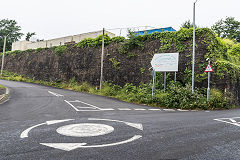
Coke ovens and charging area
|
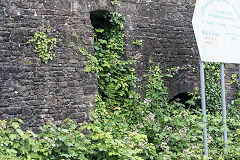
Coke ovens and charging area
|
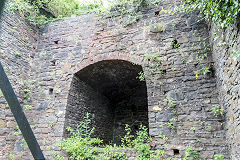
Coke ovens and charging area
|
|
Rolling Mills and Woollen Mill
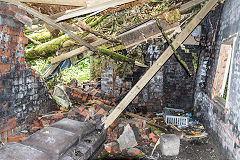
Histon Woollen Mills
|
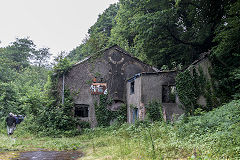
Histon Woollen Mills
|

Histon Woollen Mills
|
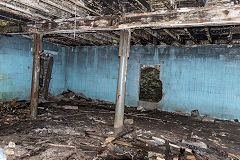
Histon Woollen Mills
|
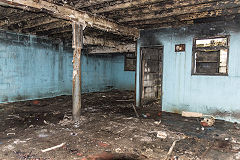
Histon Woollen Mills
|

Histon Woollen Mills
|
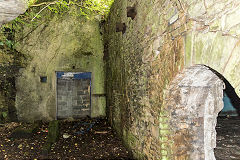
Histon Woollen Mills
|

Histon Woollen Mills
|
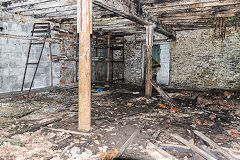
Histon Woollen Mills
|
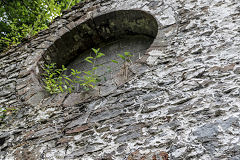
Histon Woollen Mills
|
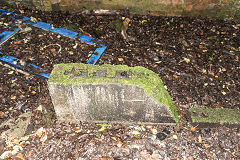
Histon Woollen Mills
|
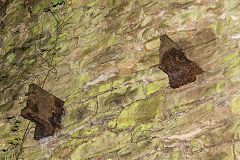
Histon Woollen Mills
|
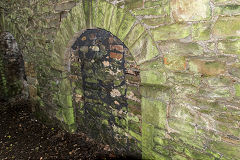
Histon Woollen Mills
|
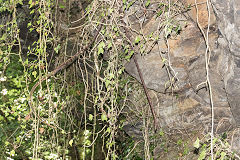
Histon Woollen Mills
|
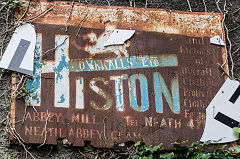
Histon Woollen Mills
|
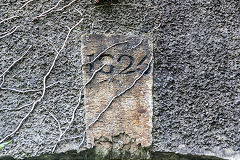
Histon Woollen Mills
|
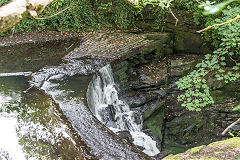
Histon Woollen Mills
|
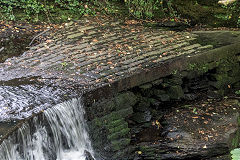
Histon Woollen Mills
|
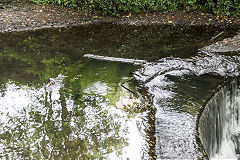
Histon Woollen Mills
|
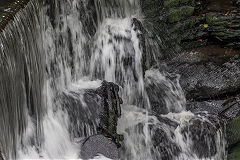
Histon Woollen Mills
|
Heol Draw weir
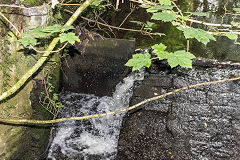
Heol Draw weir
|
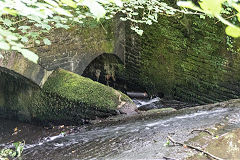
Heol Draw weir
|

Heol Draw weir
|
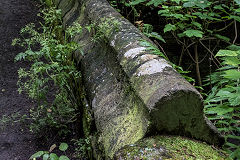
Heol Draw weir
|
Cwm Clydach
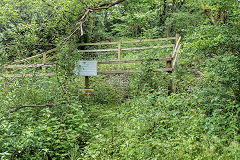
Cwm Clydach
|

Cwm Clydach
|
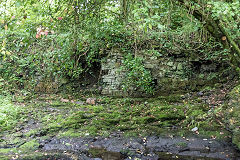
Cwm Clydach
|
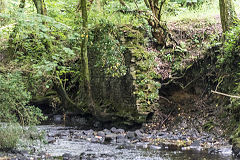
Cwm Clydach
|
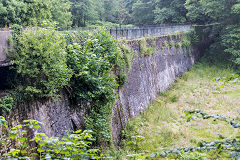
Cwm Clydach
|
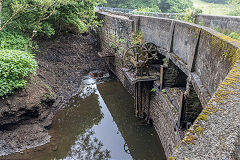
Cwm Clydach
|
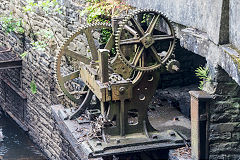
Cwm Clydach
|
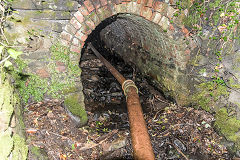
Cwm Clydach
|
Neath Abbey Ironworks locomotives
Neath Abbey Ironworks are believed to have built 34 locos. This is a simplified list of their locomotive. Some were supplied as kits of parts and some are of doubtful provenance.
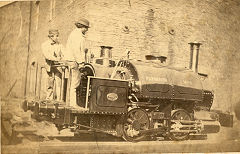
'Plymouth No 8' built in 1864
|
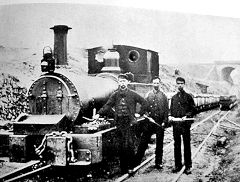
Possibly 'Abercrave', built c1870
|
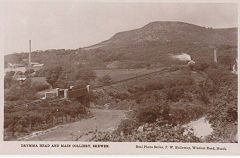
Skewen Incline, Drymma
|
| Date Built |
Type |
Gauge |
Customer |
Name or Number |
| 1829 |
0-4-0 |
4' 2" |
Thos Protheroe, Sirhowy |
Speedwell |
| 1829 |
0-4-0 |
4' 2" |
Sirhowy Tramroad (Thos Protheroe) |
Hercules |
| 1830 |
0-4-0 |
4' 2" |
Ebbw Vale (Harford Davies) |
Hawk |
| 1831 |
0-4-4-0 |
4' 2" |
Dowlais Iron Co |
- |
| 1831 |
0-6-0 |
3' 6" |
Gloucester & Cheltenham Railway |
Royal William |
| 1832 |
0-4-0 rack |
4' 2" |
Dowlais Iron Co |
Perseverance |
| 1832 |
0-4-0 |
- |
Ebbw Vale |
Industry |
| c1832 |
- |
- |
- |
Lark |
| 1833 |
0-4-0 |
4' 2" |
Dowlais Iron Co |
Mountaineer |
| 1833 |
0-4-0 |
4' 2" |
Dowlais Iron Co |
- |
| 1834 |
0-6-0 |
Standard |
Bodmin & Wadebridge Railway |
Camel |
| 1834 |
0-6-0 |
Standard |
Bodmin & Wadebridge Railway |
Elephant |
| 1836 |
0-6-0 |
4' 2" |
Dowlais Iron Co |
John Watt |
| 1836 |
0-4-4-0 geared |
- |
Rhymney Forge |
- |
| 1837 |
0-4-0 rack |
4' 2" |
Dowlais Iron Co |
Yn Barod Etto |
| 1837 |
0-4-0 |
- |
Dowlais Iron Co |
- |
| 1838 |
0-6-0 rack |
Standard |
Dowlais Iron Co |
Dowlais |
| c1835 |
0-6-0 |
4' 2" |
Dowlais Iron Co |
Success |
| 1848 |
0-4-2 |
Standard |
Taff Vale railway |
Neath Abbey |
| 1848 |
0-6-0 |
Standard |
Monmouthshire Railway & Canal Co |
2 |
| 1848 |
0-6-0 |
Standard |
Monmouthshire Railway & Canal Co |
3 |
| 1848 |
0-6-0 |
Standard |
Monmouthshire Railway & Canal Co |
4 |
| 1848 |
0-6-0 |
Standard |
Monmouthshire Railway & Canal Co |
5 |
| 1855 |
4' 4" |
Standard |
Vivian & Sons, Swansea |
Caesar |
| 1855 |
4' 4" |
Standard |
Vivian & Sons, Swansea |
- |
| 1864 |
0-4-0 |
Standard |
Plymouth Iron Co, Merthyr |
Plymouth No 8 |
| 1864 |
2-4-0T |
3' 0" |
Rhymney Iron Co |
- |
| c1860s |
0-4-0ST |
3' 0" |
Neath Abbey Iron Co |
Possibly went to Skewen incline, 2' 7½" gauge |
| c1860s |
0-4-0ST |
- |
Aberdare Iron Co |
2 |
| c1860s |
0-4-0ST |
- |
Aberdare Iron Co |
Success |
| c1860s |
0-4-0ST |
- |
Aberdare Iron Co |
- |
| c1860s |
0-4-0ST |
3' 2" |
Pascoe Grenfell Co, Swansea |
- |
| c1870 |
0-6-0T |
2' 7½" |
Main Colliery, Skewen |
'Abercrave' |
| 1871 |
0-4-0 |
3' 0" |
Cyfarthfa Ironworks |
- |
| Unknown |
- |
- |
South America |
- |
Neath Valley
Aberdulais and Cadoxton
Between Aberdulais and Neath

Aberdulais Tinplate Works
|
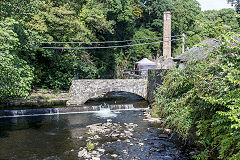
Aberdulais Tinplate Works
|
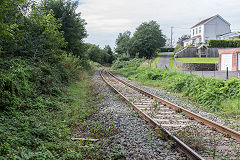
N&BR at Aberdulais
|
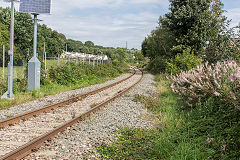
N&BR at Aberdulais
|
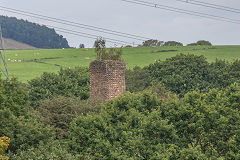
Tydraw Colliery chimney
|
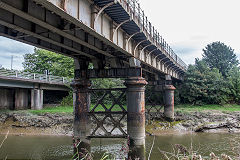
GWR 1890 viaduct at Neath
|
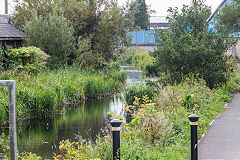
Neath Canal at Neath
|
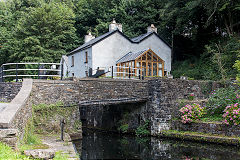
Neath Canal lock at Cadoxton
|
Cilfrew and Graig Gwladys
Tydraw Colliery, Cilfrew - SN 7668 0103
Tor Cefn Colliery, Cilfrew - SN 7637 0219
Tydraw Colliery is reported to have worked from 1889 to 1908 but isn't on the 1899 map. It does appear on the 1935 OS map as 'disused', connected to the long tramway from Tor Cefn Colliery to a tipping dock on the Neath & Brecon Railway at Cilfrew. Tor Cefn Nos 1 to 5 levels were worked by Evans & Bevan from c1866 to 1886 when they were abandoned
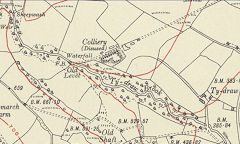
Tydraw Colliery, 1935
|

Tydraw Colliery chimney
|
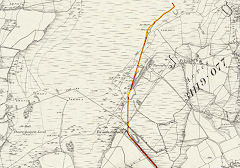
Tor Cefn Colliery, 1876
|

Tor Cefn Colliery, 1876
|
Graig Cilfrew Colliery, Graig Gwladys - SS 7665 9983
Graig Cilfrew Colliery was a short-lived re-working of what seems to be a pre-1880s level. It opened in 1912 but was abandoned in 1919. Its tramway ran North-Eastwards over a weighbridge to connect with the main Graig Gwladys tramway to the incline.
For more info on Graig Gwladys woods see their Facebook page :-
Friends of Graig Gwladys
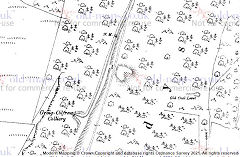
Graig Cilfrew Colliery, 1919
|
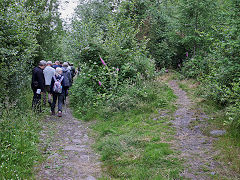
Graig Cilfrew tramway junction
|
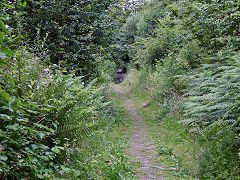
Graig Cilfrew Colliery tramway
|
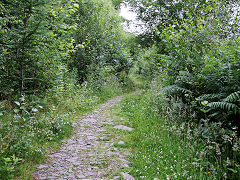
Graig Cilfrew Colliery tramway
|
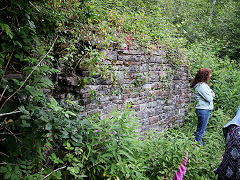
Graig Cilfrew tramway building
|
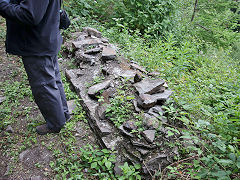
Graig Cilfrew tramway building
|

The bridge over the main tramway
|
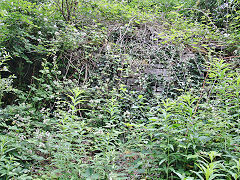
The bridge over the main tramway
|
Gelliau Colliery, Graig Gwladys - SS 7659 9962
Gelliau Colliery (also known as Gellia Cadoxton Colliery) was one of Evans & Bevan's collieries, working from c1865 to abandonment in1884. A substantial engine house remains at the level entrance. Th colliery was possibly the largest on a long tramway running from the top of Graig Gwladys incline to Griag-y-gigfran. The incline ran down to the Neath &Brecon Railway and the Tennant Canal.
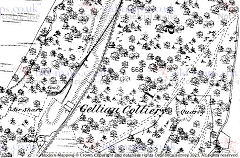
Gelliau Colliery, 1880
|
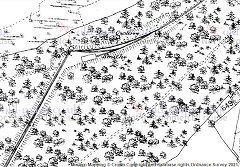
Graig Gwladys incline, 1880
|
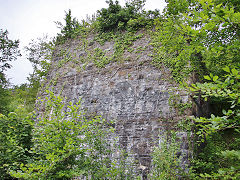
Gelliau Colliery engine house
|
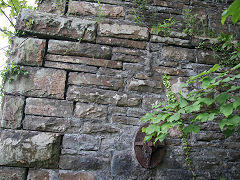
Gelliau Colliery engine house
|
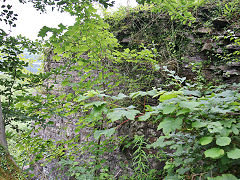
Gelliau Colliery engine house
|
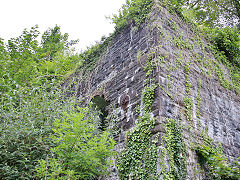
Gelliau Colliery engine house
|
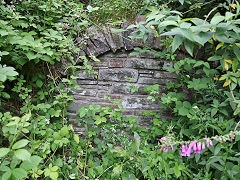
Gelliau Colliery main level
|
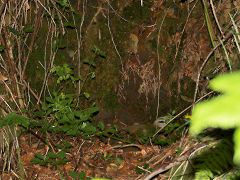
Another Gelliau Colliery level
|
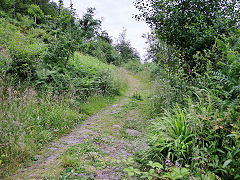
Graig Gwladys main tramway
|
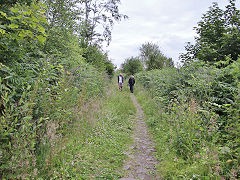
Graig Gwladys main tramway
|
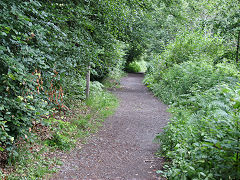
Graig Gwladys main tramway
|
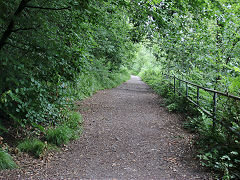
Graig Gwladys main tramway
|
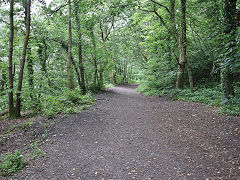
Graig Gwladys main tramway
|
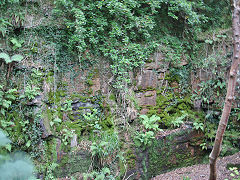
A quarry alongside the tramway
|
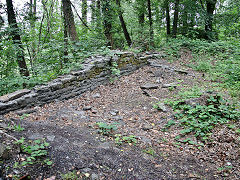
Graig Gwladys smithy
|
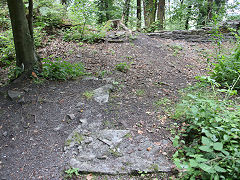
Graig Gwladys smithy
|
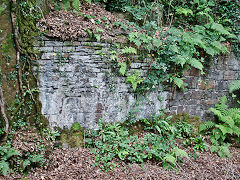
Graig Gwladys incline brakehouse
|
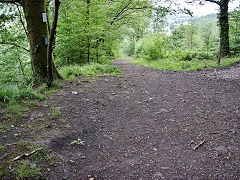
Graig Gwladys incline
|
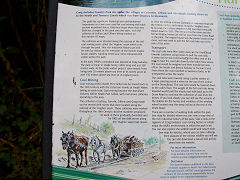
Graig Gwladys information board
|
|
Cadoxton and Rhydding
Cadoxton Limekilns - SS 7550 9868
Rhydding Colliery bridge - SS 7567 9839
Hidden in the undergrowth is what looks to be a bank of 6 limekilns that don't appear on any OS maps though 1960s maps show a quarry face behind them.
The bridge under the Vale of Neath line was used by the tramway from Rhydding Colliery at SS 7500 9865 to the wharf on the Tennant Canal in 1880.
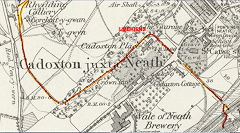
Rhydding Colliery tramway, 1876
|
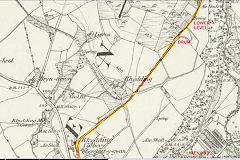
Cefnfaes tramway, 1876
|
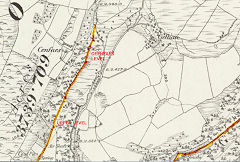
Cefnfaes tramway, 1876
|
|
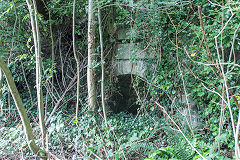
Limekilns at Cadoxton
|
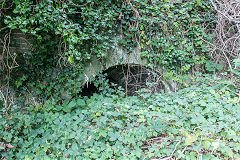
Limekilns at Cadoxton
|

Bridge under VoN at Cadoxton
|
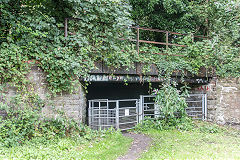
Bridge under VoN at Cadoxton
|
Cadoxton Colliery lower level - SS 7550 9920
Cadoxton Colliery upper level - SS 7561 9941
Cefnfaes Level - SS 7576 9971
The Cadoxton levels were a run of old levels in 1881 but worked on and off until the 1950s and possibly longer. They were linked by a tramway running down to Rhydding Colliery, a (brake) drum being shown on the 1880 map.
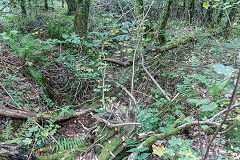
Cefnfaes Level at Cadoxton
|
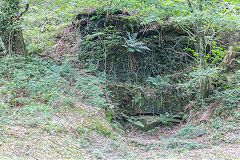
Cefnfaes Level at Cadoxton
|

Cadoxton Colliery tramway
|
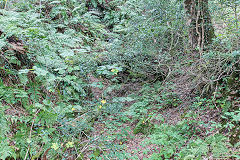
Cadoxton Colliery upper level
|

Cadoxton Colliery upper level
|
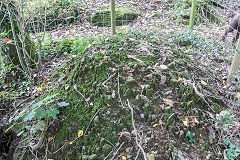
Cadoxton Colliery airshaft
|
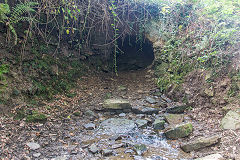
Cadoxton Colliery lower level
|

Cadoxton Colliery lower level
|
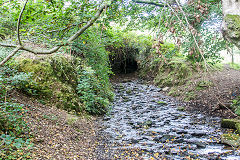
Cadoxton Colliery lower level
|
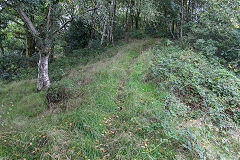
Cadoxton Colliery lower level tips
|
|
|
The Tennant Canal from Aberdulais to Neath
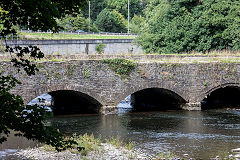
Tennant Canal aqueduct
|
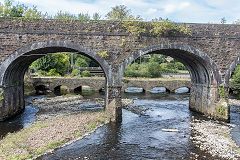
Tennant Canal aqueduct
|

Tennant Canal basin, Aberdulais
|
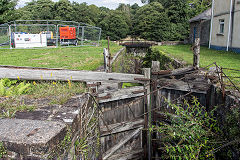
Tennant Canal lock, Aberdulais
|
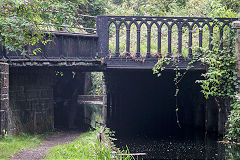
Vale of Neath Railway bridge
|
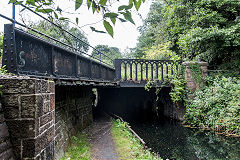
Vale of Neath Railway bridge
|
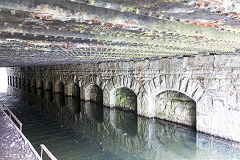
Vale of Neath Railway bridge
|
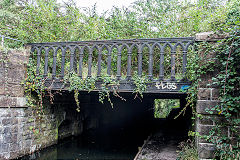
Vale of Neath Railway bridge
|

Rhydding Colliery bridge, Cadoxton
|
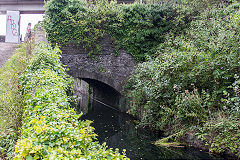
Tennant Canal at Neath
|
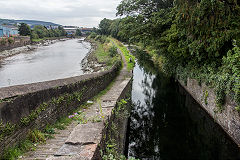
Tennant Canal at Neath
|
|
The Neath Canal at Resolven
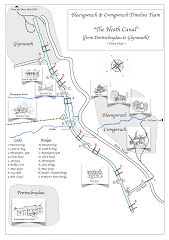
The Neath Canal at Resoven
|
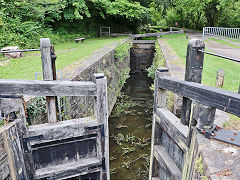
Neath Canal lock 8, Resolven
|
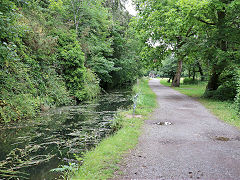
Neath Canal at Resolven
|
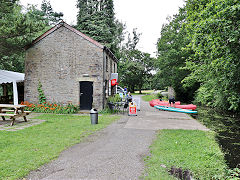
Neath Canal Ty Banc cottage
|
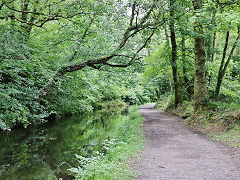
Neath Canal at Resolven
|

Neath Canal at Resolven
|
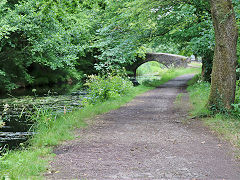
Neath Canal at Resolven
|
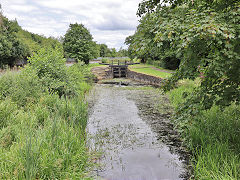
Neath Canal lock 9, Resolven
|
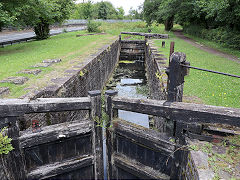
Neath Canal lock 9, Resolven
|
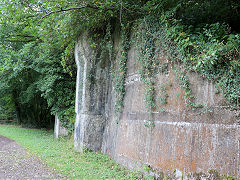
Neath Canal Rheola works bridge
|
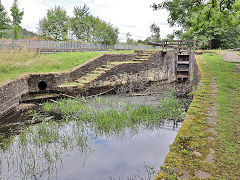
Neath Canal lock 10, Rheola
|
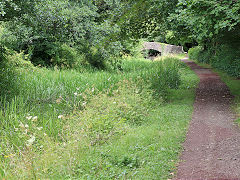
Neath Canal, Rheola
|
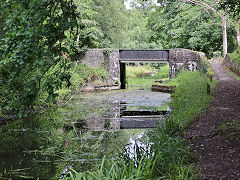
Neath Canal, Rheola House bridge
|
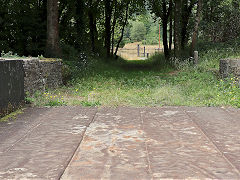
Neath Canal, Rheola House bridge
|
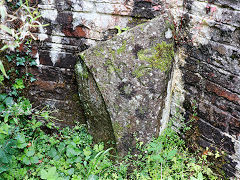
Neath Canal 'NC' boundary stone
|
|
Glynneath
Abernant and Pontwalby Brickworks
These historical photos of Glynneath are courtesy of Roy Bowen from the W E Bowen collection. The Abernant Brickworks photos show in the background wagons at the screens and the foot of the incline to Rock Colliery and Bryn Ceffylau Colliery. The canal ended at the wharf opposite Abernant Brickworks and the tramroad went on to the silica mines and gunpowder works at Pontneddfechan. The Pontwalby photos show the Gunpowder Works tramroad going off to the right from the brickworks and the Pontwalby Viaduct on the Vale of Neath Railway with the incline of the Cefn Rhigos Tramroad climbing the hillside.
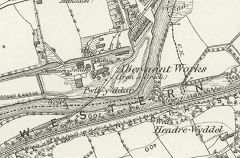
Abernant Brickworks, 1875
|
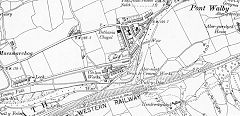
Abernant Brickworks, 1897
|

Abernant Brickworks, Glynneath
|
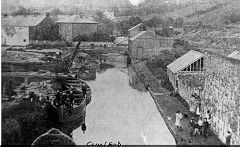
Abernant Brickworks, Glynneath
|

Pontwalby Brickworks, 1875
|
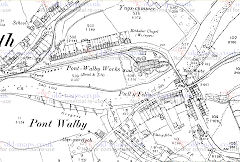
Pontwalby Brickworks, 1899
|
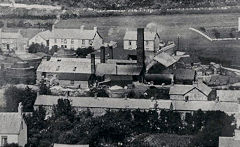
Pontwalby Brickworks, Glynneath
|
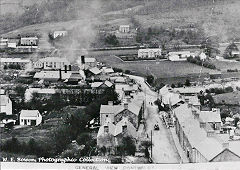
Pontwalby Brickworks, Glynneath
|
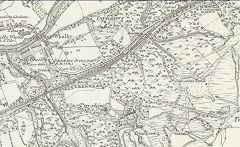
Pontwalby,1875
|
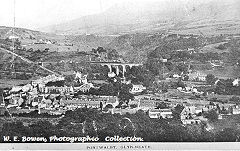
Pontwalby viaduct and incline
|
|
|
Dulais Valley
Cefn Coed Mining Museum - SN 7853 0321
During 2020-21 the Cefn Coed Mining Museum was closed to allow the headgear to be restored. This is the 'behind-the-scenes' work in progress

Cefn Coed Mining Museum
|
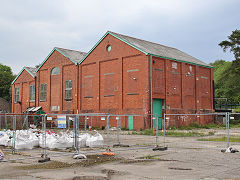
Cefn Coed Mining Museum
|
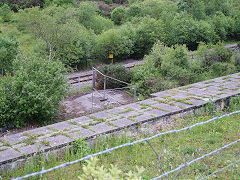
Cefn Coed Mining Museum
|
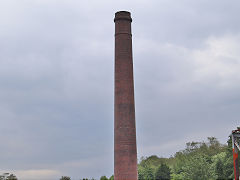
Cefn Coed Mining Museum
|

Cefn Coed Mining Museum
|
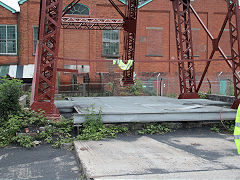
Cefn Coed Mining Museum
|
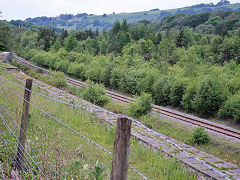
Cefn Coed Mining Museum
|
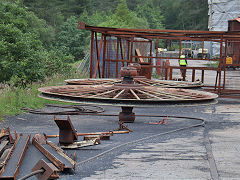
Cefn Coed Mining Museum
|
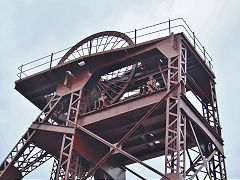
Cefn Coed Mining Museum
|
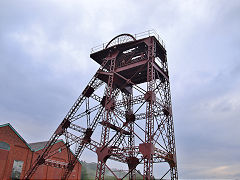
Cefn Coed Mining Museum
|
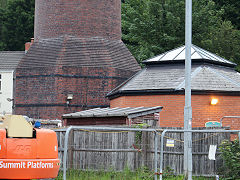
Cefn Coed Mining Museum
|
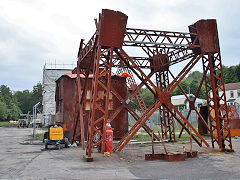
Cefn Coed Mining Museum
|
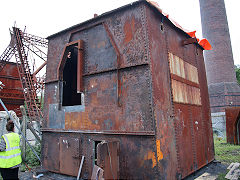
Cefn Coed Mining Museum
|
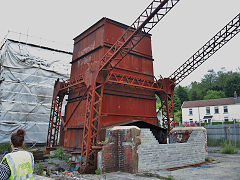
Cefn Coed Mining Museum
|
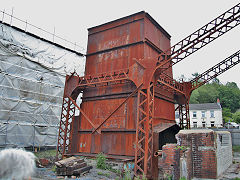
Cefn Coed Mining Museum
|
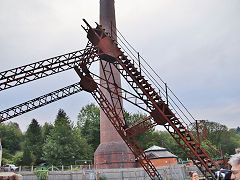
Cefn Coed Mining Museum
|
The Counties of Brecon and Carmarthen
Brecon
Gasworks and Hay Railway - SO 0518 2800
The gasworks is shown on the 1888 to 1964 OS maps but then slowly disappears.
The 3'6" gauge 'Hay Railway' dates from 1816 and connected with the Kington Tramroad at Eardisley to form the longest tramroad in the UK - 36 miles. They were converted to railways from 1860.
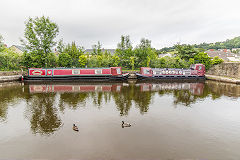
The last wharf in Brecon
|
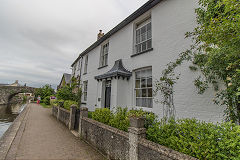
Gasworks House, Brecon
|
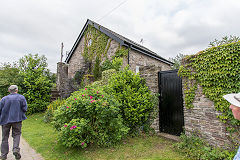
Brecon Gasworks
|
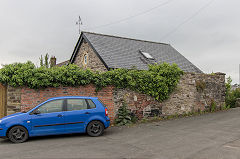
Brecon Gasworks
|
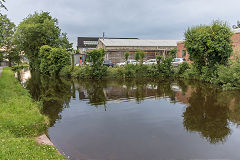
Watton Wharf, Brecon
|
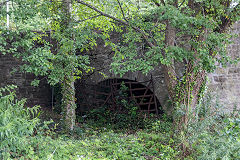
Hay Railway arch
|
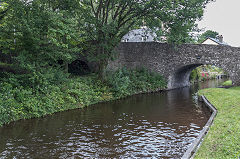
Railway and Canal bridge
|
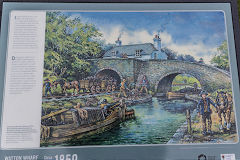
Railway and Canal bridge
|
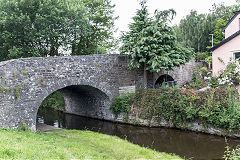
Railway and Canal bridge
|
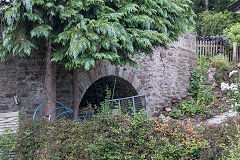
Hay Railway arch
|
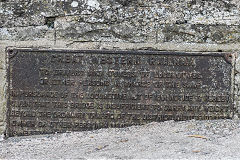
GWR notice
|

Railway and Canal bridge
|
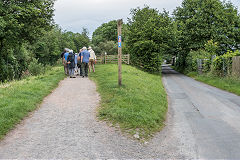
Canal and Railway junction
|
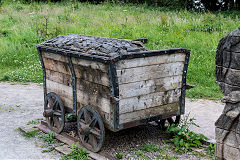
Hay Railway wagon
|
|
|
Watton limekilns - SO 0547 2792
The Watton Limekilns at Brecon, a set of five kilns on the banks of the Brecon and Abergavenny Canal. The righthand (Eastern) two or three were built c1802 with the fourth added around 1805-6 in the same style. Sometime after 1807 a fifth smaller kiln was added at the Western end. They were fed from behind by the canal and the lime removed by tram on the Hay Railway below. The four main kilns had double drawholes while the fifth had a single drawhole.
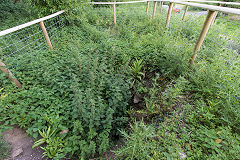
Collapsed kiln
|
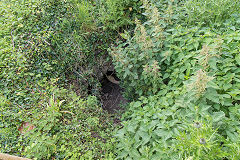
Collapsed kiln
|
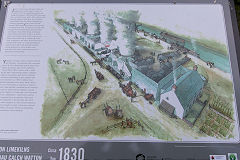
Watton limekilns notice
|
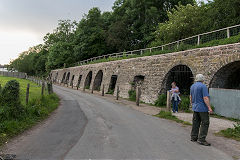
The limekilns from the East
|
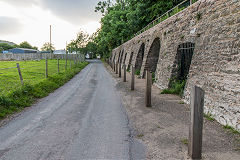
The limekilns from the East
|
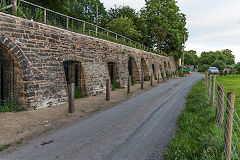
The limekilns from the West
|
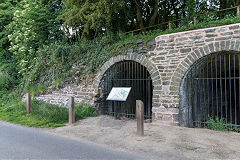
The fourth Watton limekiln
|
|
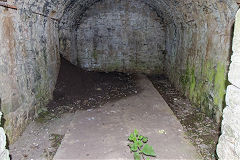
The first storage chamber
|
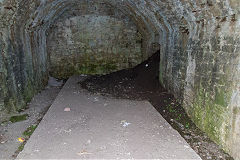
The second storage chamber
|
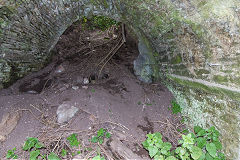
One of the collapsed kilns
|

The third kiln, Watton
|
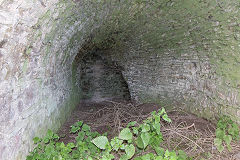
The third kiln, Watton
|
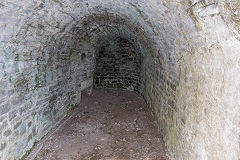
The fourth kiln, Watton
|
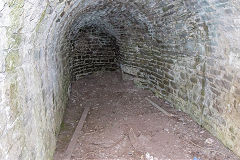
The fourth kiln, Watton
|
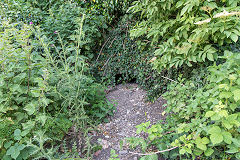
The fifth kiln, Watton
|
Out and About in Breconshire
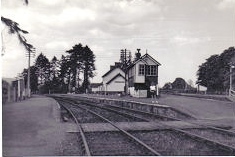
Three Cocks Junction
|
|
|
Carmarthenshire
Nevills Railway, Llanelly Past and Present
These old photos of Nevills Railway in Llanelly appeared on the'Wales Past and Present' Facebook group so with huge help from Keith Morris (who supplied all the info) I was able to locate the present-day views. Three sites can still be intentified but the fourth has changed beyond recognition.
Photo 1 - Heol Fawr - you can make out the street name on the house on the left - although that is in fact Gathen Terrace!! Entrance to the Western Works (Tinplate) in the middle. The curved roof in the background is Waddles Patent Fan and Engineering Works. Picture must have been taken in the late 50's after the trolleybuses had finished (no overhead wires) as they went up Heol Fawr to Station Road.
Photo 2 - Bryn Terrace - the telephone box is at the junction with Marine Street. The line going to the right went to Llanelli West Box (Trevose sidings) via St Davids Lane whilst the line going to the left went to Zammit's yard (where Nevill's Loco shed was). The works in the background was part of the "Tin Stamping" works
Photo 3 - South side of the railway in 1952 - Glanmor Road looking South, Copperworks Rd is crossing the background (where the SWT bus is) - the loco is proceeding north to join with the line from St Davids Lane at Trevose Sidings by Glanmor Foundry (behind Llanelli West Box). The loco is Nevill's "Kathleen"
Photo 4 - Cambrian Street looking SE. Behind the photographer the line continued to Old Castle Crossing - in the distance the line continued behind the backyards to join up with the previous picture at Bryn Terrace
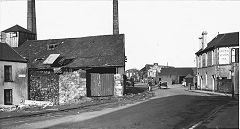
Heol Fawr to Station Road
|
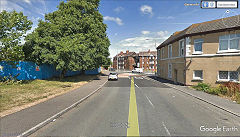
Heol Fawr to Station Road
|
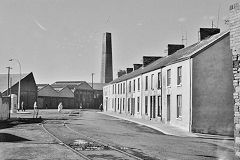
Bryn Terrace
|
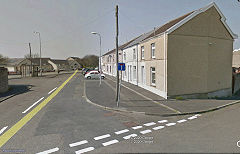
Bryn Terrace
|
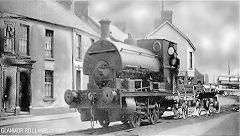
Bryn Terrace
|
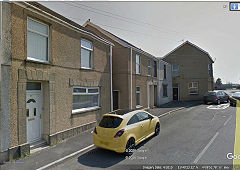
Glanmor Road looking South
|
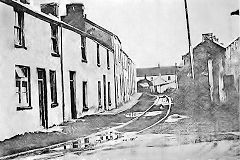
Cambrian Street looking SE
|

Cambrian Street looking SE
|
Llanybyther Brickworks - SN 5038 4226
Assuming that this is the brickworks shown on the map at Highmead, I'm told that a large walled garden was built there in the 1860s for which the brickworks may have been built. The brickworks only appears on the 1887 map and is already marked as 'disused'.
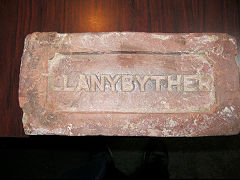
Llanybyther Brickworks
|
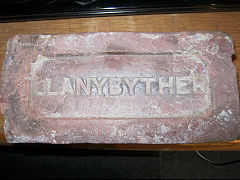
Llanybyther Brickworks
|
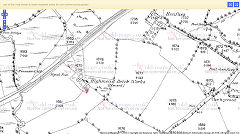
Llanybyther Brickworks
|
|
Dolaucothi Gold Mine - SN 6645 4030
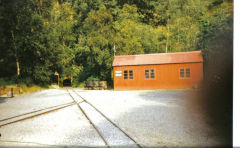
Dolaucothi Gold Mine
|
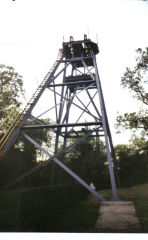
Dolaucothi Gold Mine
|
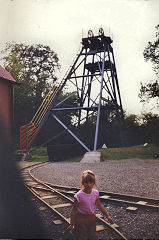
Dolaucothi Gold Mine
|
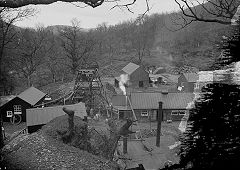
Dolaucothi Gold Mine
|
Pantyffynnon - SO 620113
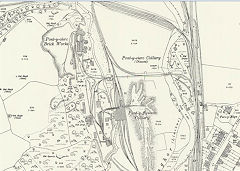
Blaina Colliery and Pontyclerc brickworks
|
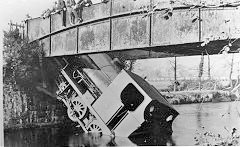
'Millicent' goes swimming
|

'Millicent' dries off and back to work
|

Pontyclerc brickworks, Pantyffynnon
|
Acknowledgments, sources and further reading.
Thanks for information and the use of their photographs to :- Bob Ashton, Robert Griffiths, 'gwrachtimeline.co.uk', Industrial Railway Society, Euros Jones, Hugh Pincott.
For more info on Graig Gwladys woods see their Facebook page :-
Friends of Graig Gwladys
A Guide to the Website
Industrial Wales
Collieries, Ironworks, Quarries, Railways, Canals, Tramroads, Tunnels, Culverts and so much more....
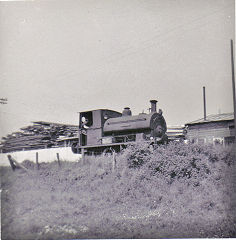
|
Brickworks of Wales
Bricks are 'History with a label' so here's the story of the Brickworks of Wales - photos, maps and the products themselves
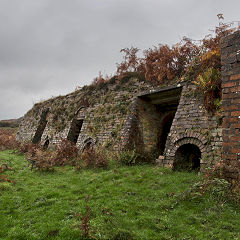
|
Around the World
My travels around the UK and the Whole Wide World in search of industries, railways, trams and mines to name a few.
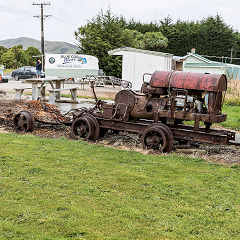
|
Boundary Stones and Mileposts
Boundary Stones, Mileposts and other markers in simple alphabetical order of their initials, name or site.

|
Ships and Shipping
Ships around the World in simple alphabetical order of their name (or apparent area if I can't read the name).
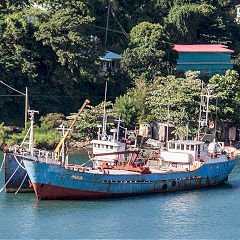
|
The Site Map and Index
A full list of all the pages of the whole website in just one place, so you should find exactly what you are looking for.
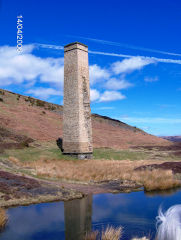
|
About the Site
The background and technical details about the site, plus a contact page and links to other sites - and a warning !!

|
Contact Me
Something to add? A great photo? Something wrong? or need to know more about things? Just drop me a line here.

|
Further Reading
You can find lots of local and other very helpful websites, books, magazines and Facebook groups all listed here.
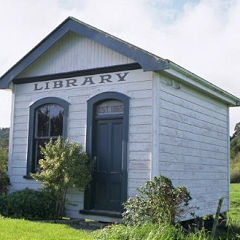
|
All rights reserved - Phil Jenkins
